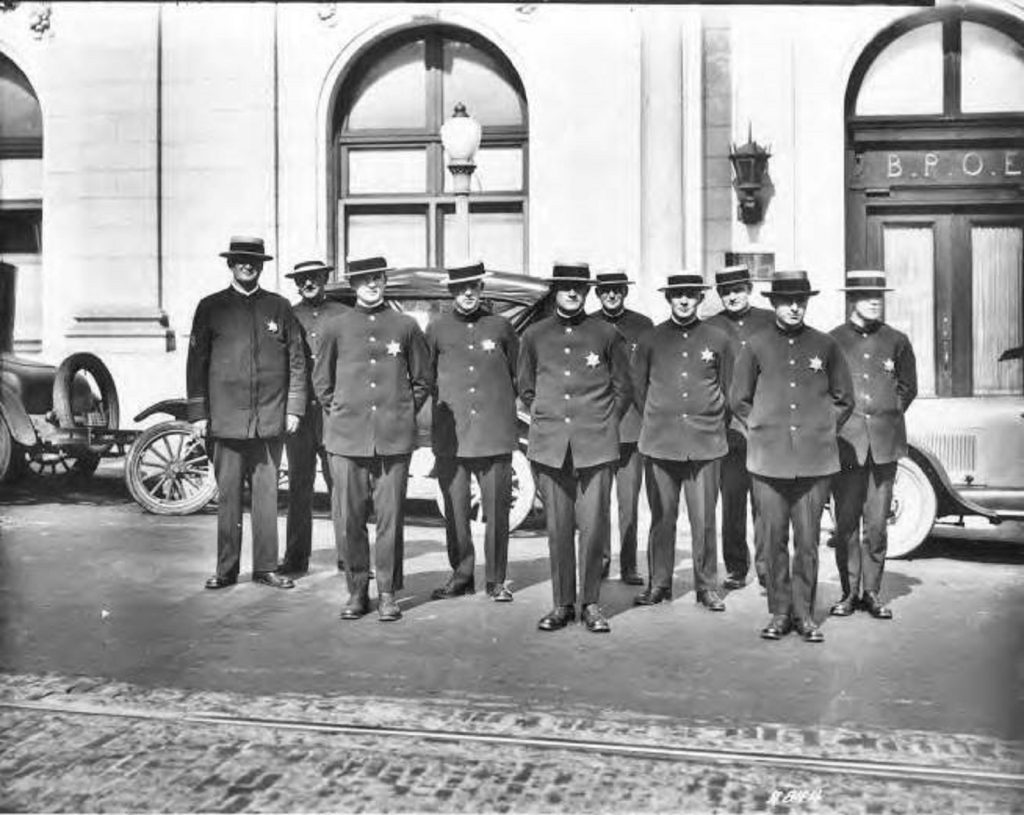For men during the first half of the twentieth century, the coming of warm weather meant a switch from felt to straw hats. “About the time the robins begin hopping about with straws in their mouths,” wrote the Tacoma News Tribune in 1932, “hat dealers and hat weavers are reminded of that notable spring holiday, Straw Hat Day.” After May 18, they continued, “No man will be really dressed up at all unless he dons one and lays the old felt away in mothballs.”

What is Straw Hat Day?
While Straw Hat Day’s history is muddled, the hats themselves were the height of men’s summer fashion in the late nineteenth and early twentieth centuries. The holiday focused on men’s fashion, although women also wore straw hats. They were cooler to wear in hot weather.
Though Straw Hat Day is now officially May 15, the date was locally determined during this time according to weather predictions. It typically ranged from mid-May to early June.
Tacoma references to this gala civic event, as it was later called, date back to 1908 when Thompson Mercantile Company held a half-off sale on their straw hats. It took about another decade for the holiday to become prominent.
For Straw Hat Day shop keepers at Tacoma’s clothing stores, both big and small, filled shop windows with displays of the season’s latest styles and hat repairers were kept busy cleaning and rebuilding customers’ old hats. Styles changed over time, especially in materials, brim sizes, and hat band colors. Many of these styles originated in warmer climates. They included the Bangkok, Cabana, Java, Madagascar, Mikado, Monterey, Toyo and most famously, Panama. The Alpine, Leghorn, Milan, and Sennit (or Sailor) were other popular styles.

Will it Rain in Tacoma on Straw Hat Day?
Because rain could ruin straw hats and the holiday marked the beginning of summer, rain on Straw Hat Day was a constant concern in Western Washington. And it usually did rain, despite hopes like those expressed by the Tacoma Daily Ledger in 1933 that “the sprinkling pot of old Jupiter Pluvius must be getting about dry.”
In 1937, in a likely futile attempt to avoid rain, the Straw Hat Day committee decided after pouring over almanacs, weather charts and the zodiac signs that after years of picking supposedly sunny days and getting rain, they would choose a rainy day and expect sunshine.
That it usually rained on a day celebrating summer was a source of humor. In his “Sunny Side Up” column in the Tacoma Daily Ledger, Jim Egan made many jokes about inclement weather on the holiday. The question he asked in 1927 “is whether King Straw will reign or be reigned on.” Rain was not the only hazard for straw hats. Desperate men clutch at straws, he said the year before, “Have you ever noticed a man waking down Broadway on a breezy day?”

Tacoma’s Straw Hat Day Program
Starting in the 1920s and continuing for decades, Straw Hat Day was a major civic event. The Tacoma Retail Bureau coordinated advertising for local clothes stores and promoted the day through events such as musical programs on KMO radio and a free parade downtown.
The 1925 parade was a particularly elaborate one. Starting at city hall, the group marched up Pacific Avenue to 17th Street, turning onto Broadway and ending at the Winthrop Hotel. The parade included the Lincoln High School band and circus, Eagles’ Glee Club, City League baseball players Moose Drum Corps and Gyro Club. Police officers, wearing straw hats, led and accompanied the parade on motorcycles. Paradegoers said goodbye to winter hats with a mock funeral for “Old Man Felt” and welcomed summer with a float featuring a female hula dancer under a giant straw hat. H.C. Weaver Productions stars rode in the parade, including noted actor Alan Hale, senior.
The Retail Bureau tried other gimmicks to drum up business. Klopfenstein’s clothing store held a contest in 1935 where men had to guess the weight of the season’s new hats on display in the business’ front window. The two top winners won Panama hats, while the 25 runners-up got tickets to Mae West’s “Going to Town” movie opening at the Music Box Theater the following week.
They also connected the holiday with baseball. A Straw Hat Night was declared at the Tacoma Tigers vs. Spokane game in 1942. A few years before, in 1939, local merchants had promised to reward home players with hats and other prizes for plays such as being the first to hit or bounce the ball against the fence.
Later Years of Straw Hat Day in Tacoma
World War II did little to dim Straw Hat Day’s observance. While stocks were low, “war or no war” reflected the Tacoma News Tribune in 1942, “Uncle Sam isn’t going to forget his annual yearning for a new top piece which will rest lightly on his silvered head.” As if to contradict the war’s gloom, bright hat bands were featured.
The day remained prominent in the decade after World War II, fading as hats became old-fashioned. Still, my grandfather Andy longed for a Panama hat in his old age come summer.
While no longer a prominent holiday, Straw Hat Day is now celebrated on May 15 every year. The weather in Tacoma remains unreliable. Jim Egan’s words in his Sunny Side Up column still ring true from 1926, “Well, this is Straw Hat Day again. Don’t forget to bring your umbrella!”






































